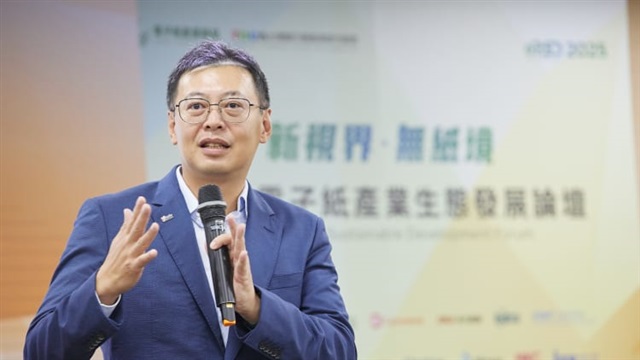E Ink Holdings is riding a wave of strong demand for its electronic paper displays. During its earnings briefing on August 13, CEO Johnson Lee acknowledged that the company's production capacity has been thoroughly eclipsed by customer demand. He projected that the second quarter would mark the year's revenue peak, with the third quarter likely holding steady, albeit not exceeding the second quarter, and the fourth quarter experiencing some deceleration—possibly pushing some volume into early 2026. Overall, however, Lee assured that 2025 would see solid operational performance, with momentum carrying into 2026.
Buoyed by surging sales, E Ink's gross margin for the second quarter exceeded 60%, exceeding expectations from analysts and investors alike. Lee attributed this impressive figure to a favorable product mix weighted toward higher-margin materials and improved factory efficiency.
Thanks to E Ink's ongoing investments in automation and AI-driven data systems, production efficiency has continued to improve—playing a key role in boosting profit margins. While the company is reluctant to lower prices amid tight capacity, Lee noted that expanded production in the future could create room for price adjustments to help stimulate market demand.
Capacity expansion: building for the future
The second quarter delivered a full utilization scenario for E Ink's production lines, reducing pricing pressure and boosting margins. Still, Lee emphasized, the company's long-term target for gross margin remains in the 50–55% range.
E Ink's expansion plan is unfolding steadily. A previously planned H5 production line—originally intended to begin volume output in the first quarter—was delayed until the third quarter. The company currently operates seven e-paper production lines, and is planning the rollout of an H6 line, expected to be built in 2026 and in mass production by early 2027. Meanwhile, expansion at its Gongyin facility is proceeding on schedule. To further bolster innovation and small-scale testing, E Ink is also acquiring new lab space in the US and increasing investment in local materials capacity.
Product highlights: E-reader sales, ESL, and digital signage on the rise
Among its products, digital signage is poised for the sharpest growth in 2025—thanks to a low baseline, it's set to climb rapidly. Electronic Shelf Labels (ESL) and e-book readers are also expected to grow, crediting gains in color-display technology. Yet, demand from China's education sector underperformed—falling short of the company's projections.
Lee remains bullish about color E Ink displays moving forward, predicting a continued expansion of the market into 2026. Notably, digital signage now accounts for more than 1% of E Ink's revenue, with major brands such as Samsung and Sharp integrating E Ink solutions. Distinctions between digital signage and large ESL applications are blurring: modern ESL panels can display photos and advertising, effectively acting as miniature digital signs, thus fueling a virtuous cycle of deployment.
E Ink categorizes its products carefully: Spectra 6 is aimed at large-format digital displays, while the Spectra 3100 line specializes in black, white, and red ESL devices.
Tariff worries trigger early orders
Lee explained that tariff uncertainties, particularly in the US, prompted a rush of early orders in the second quarter. Retailers planning to deploy ESL systems—regardless of tariff policy—accelerated installation, while others without firm plans took a wait‑and‑see approach.
Looking ahead, Lee positioned the second quarter as the year's high-water mark. The third quarter will be strong, but not stronger than the second quarter, he said. The fourth quarter typically softens, especially for ESL customers—customers prefer to hold less inventory, and post‑Christmas is not a popular time for installations. E‑book readers follow a similar conservative pattern."
Article edited by Jingyue Hsiao




